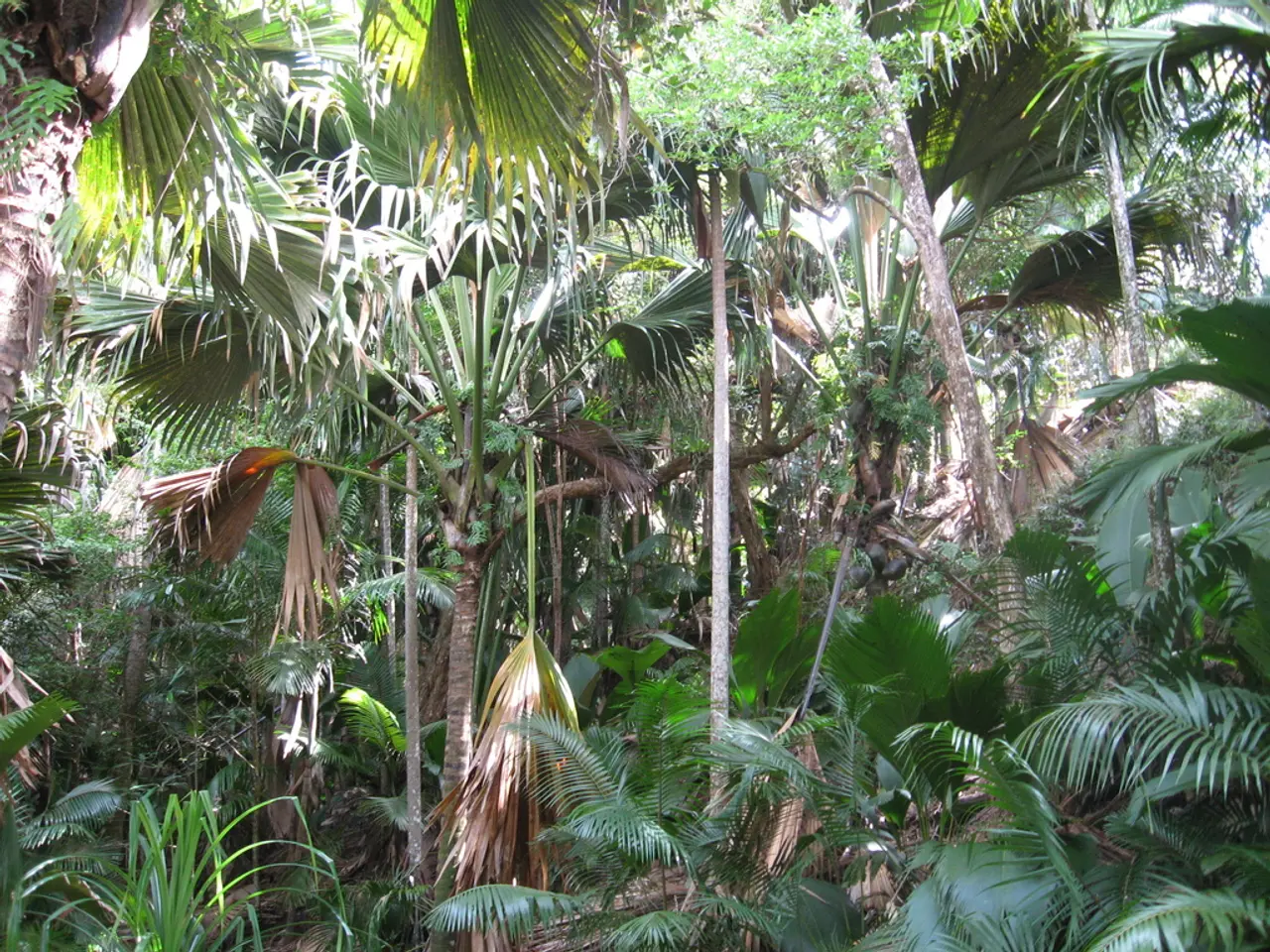Agroforestry's dominance shines bright in the coming years
The Universities of Hohenheim in Stuttgart and Freiburg have issued a joint statement, expressing their commitment to making agroforestry a cornerstone of sustainable land use. The two renowned institutions, known for their agroecological and sustainability research, are strengthening their cooperation to develop this innovative approach.
Agroforestry, a system that combines crop farming or livestock farming with shade-providing trees and shrubs, is being considered due to more frequent drought periods and other consequences of climate change. This holistic approach is seen as a means of making agriculture more resilient to climate risks, while also promoting biodiversity and enhancing overall productivity.
Thomas Seifert from the University of Freiburg emphasises the necessity of a more holistic approach, stating that a purely forest or agricultural area approach is insufficient for the future. He explains that the universities' focus on forest and environmental sciences complements the agricultural and nutritional sciences expertise at Hohenheim.
Claudia Bieling, a forest scientist at the University of Hohenheim, adds that combining shade-providing trees and shrubs with crop or livestock farming creates synergies, enhancing biodiversity, improving soil health, binding carbon, and strengthening rural foundations.
The economic benefits of agroforestry are numerous. By diversifying income streams through timber, fruits, nuts, fodder, alongside conventional crops, farmers can reduce input costs through natural pest regulation and nutrient recycling. This leads to enhanced long-term profitability and greater resilience against market and climate risks.
The universities are also focusing on developing agroforestry as a means of economic diversification for farmers while reducing their ecological footprint. Michael Cormann from the Coordination Office for Agroforestry System Research highlights the traditional presence of orchards in Baden-Württemberg and emphasises the potential of modern approaches to create new agroforestry systems that meet current ecological and economic needs.
The universities plan to conduct more joint research projects, teaching offers, and potentially a joint master's program, and are considering long-term trial areas. A regional agroforestry cluster could emerge from this initiative with other universities in the future.
For precise documentation of their specific agroforestry projects and economic assessments, their research publications or institutional reports would provide detailed data. However, the current search results do not include this information.
In conclusion, the Universities of Hohenheim and Freiburg are leading the way in advancing agroforestry for sustainable land use, recognising its potential in enhancing biodiversity, improving soil health, and providing economic benefits to farmers. Their joint efforts aim to make agriculture more resilient to climate change, while also promoting responsible environmental management.
- The universities' commitment to making agroforestry a cornerstone of sustainable land use extends to education and self-development, with a potential joint master's program under consideration.
- The interdisciplinary approach to agroforestry, combining environmental science, agriculture, and forestry, is seen as crucial for the future, as emphasized by professors at both universities.
- Learning about sustainable living through agroforestry opportunities could potentially result in lifestyle changes that promote responsible environmental management, such as home-and-garden practices focusing on biodiversity and carbon sequestration.
- By focusing on agroforestry as a means of sustainable living and economic diversification, the universities aim to not only improve the livelihoods of farmers but also to contribute to climate-change mitigation and adaptation strategies through research and practical applications.






